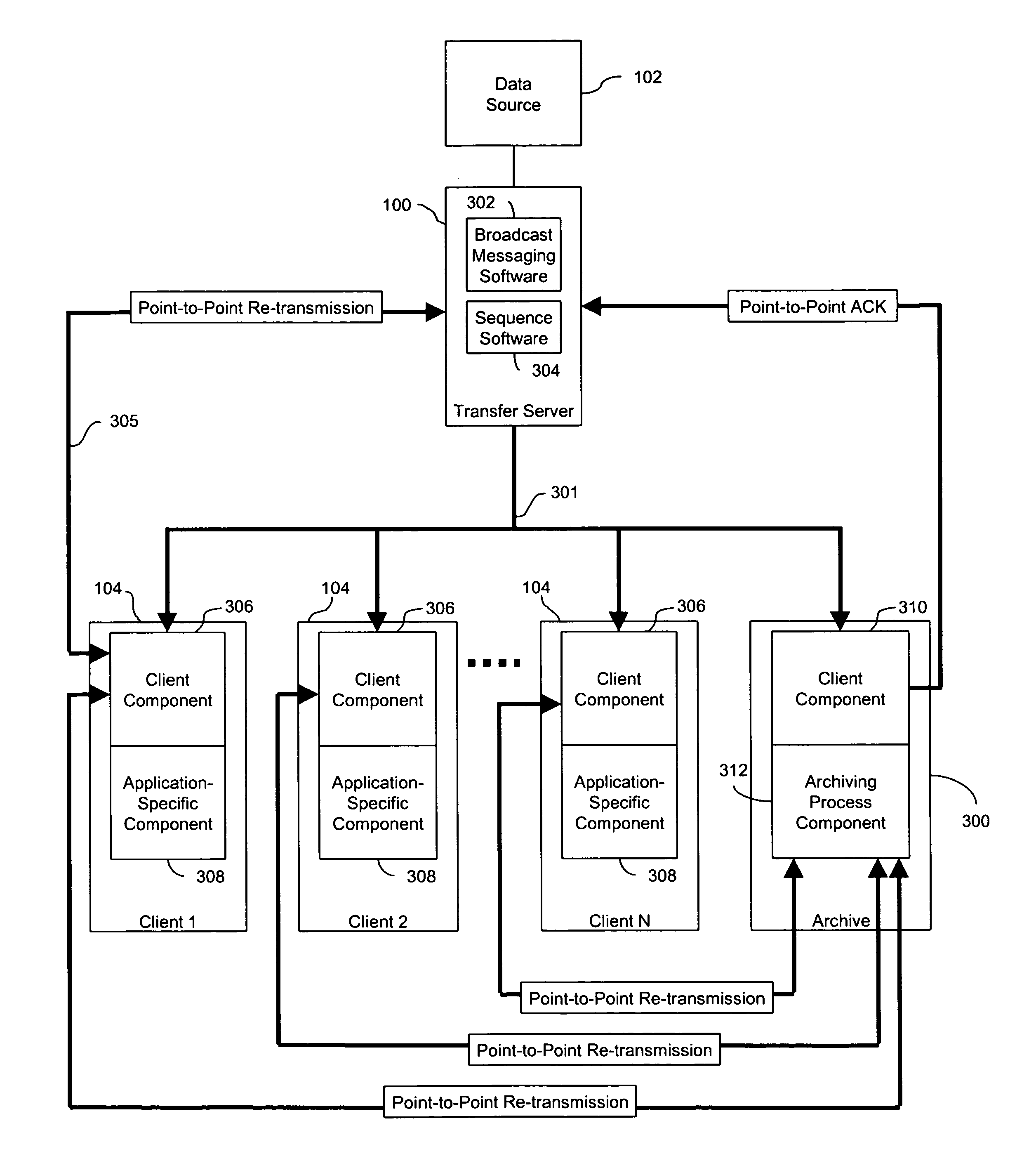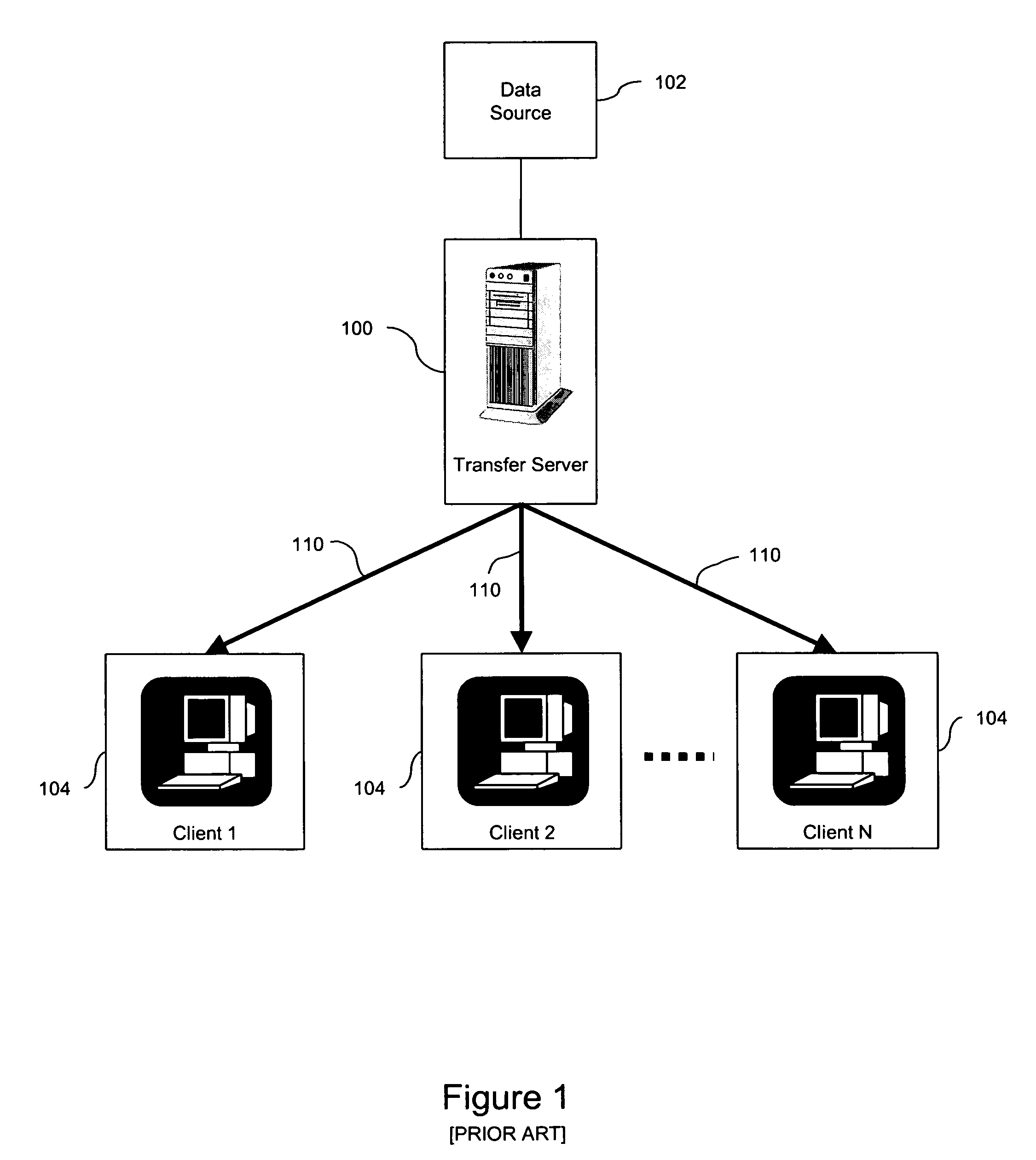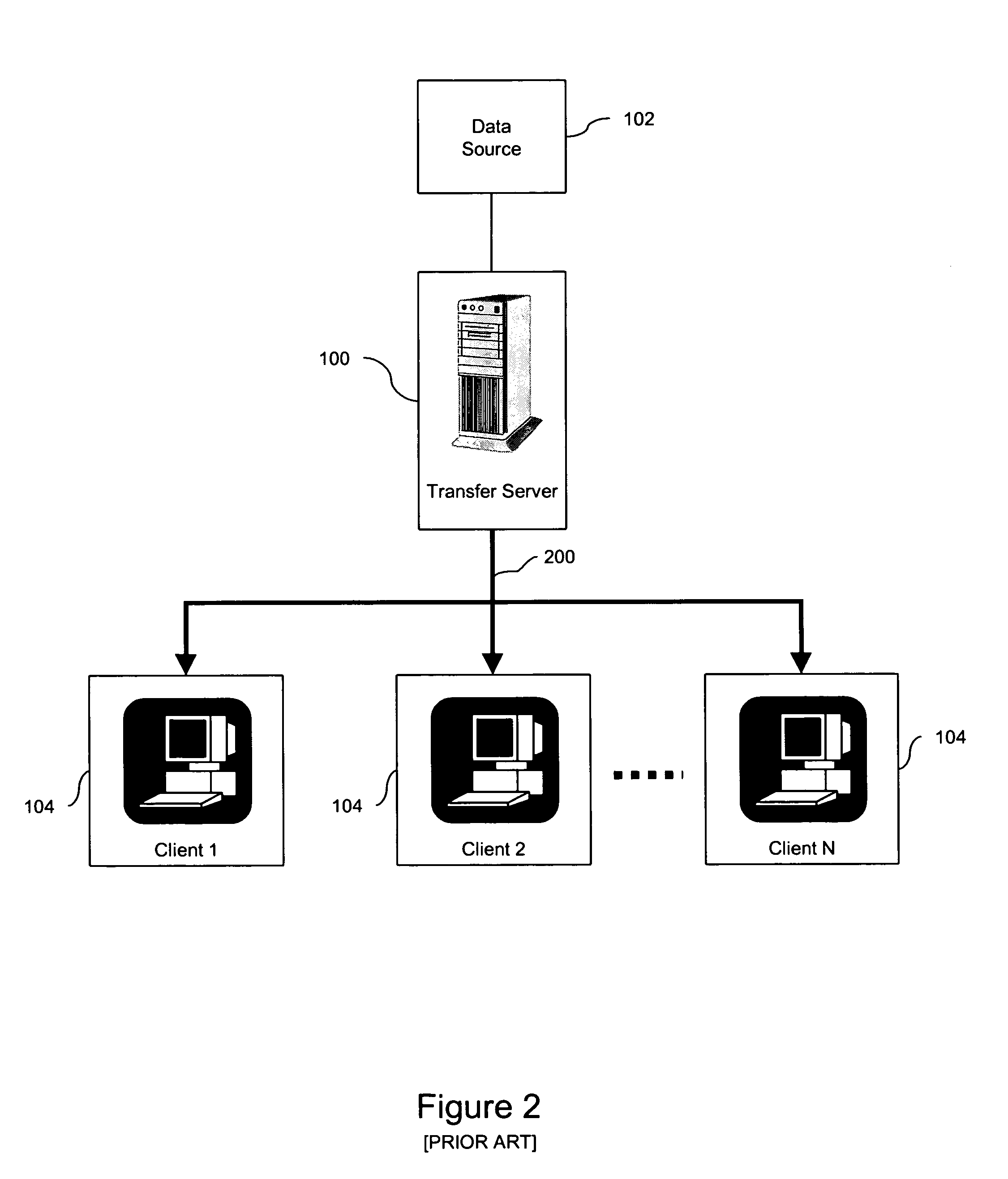System and method for data distribution and recovery
a data distribution and recovery technology, applied in the field of data distribution, can solve the problems of data distribution further straining the resources of transfer servers, not only its resources, network bandwidth, etc., and achieve the effect of no administrative overhead
- Summary
- Abstract
- Description
- Claims
- Application Information
AI Technical Summary
Benefits of technology
Problems solved by technology
Method used
Image
Examples
Embodiment Construction
[0030]The present invention is a system and method for distributing data from a server to clients and for recovering data for disabled clients that miss the original data distribution.
[0031]FIG. 3 illustrates a representative embodiment of the present invention including a data source 102, a transfer server 100 in communication with data source 102, a plurality of clients 104 in communication with transfer server 100, and an archive 300 in communication with transfer server 100 and the plurality of clients 104. In terms of client-server architecture, transfer server 100 functions as a server in relation to the plurality of clients 104 and archive 300. In addition to functioning as a client of transfer server 100, archive 300 also functions as a server in relation to the plurality of clients 104.
[0032]Data source 102 provides the raw data that is to be manipulated and analyzed by front-end computers (i.e., clients 104 and archive 300). Data source 102 can provide this raw data in lar...
PUM
 Login to View More
Login to View More Abstract
Description
Claims
Application Information
 Login to View More
Login to View More - R&D
- Intellectual Property
- Life Sciences
- Materials
- Tech Scout
- Unparalleled Data Quality
- Higher Quality Content
- 60% Fewer Hallucinations
Browse by: Latest US Patents, China's latest patents, Technical Efficacy Thesaurus, Application Domain, Technology Topic, Popular Technical Reports.
© 2025 PatSnap. All rights reserved.Legal|Privacy policy|Modern Slavery Act Transparency Statement|Sitemap|About US| Contact US: help@patsnap.com



